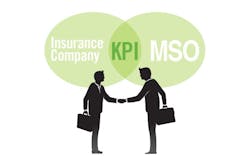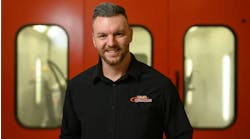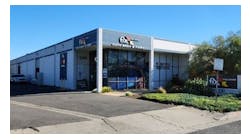A trend is emerging for U.S. insurance companies to prefer partnering with collision centers that are able to self-manage the key performance indicators (KPIs) and claims management responsibilities dictated by direct repair programs (DRPs). Several large multiple shop operations (MSOs) in the collision industry have recognized the need and adopted processes to make it happen.
It’s something independent shops can learn to do to, but some of the larger MSOs are early adopters because of their infrastructure. Erick Bickett, CEO of Fix Auto USA, says MSOs are excelling at managing the specific KPIs most critical to insurers, such as quality, efficiency, repair cost and customer service.
“Those are all things that are usually managed by insurance representatives during the repair process,” Bickett says. “They physically visit shops to audit the facility’s performance.”
Some large repair networks, Bickett says, have learned that they can benefit insurers by eliminating that responsibility. They are putting their own staff in place to handle those duties.
For example, Fix Auto has a claims staff that serves as a liaison between shop locations and insurers. The company does its own audits and training to improve underperforming facilities.
“We do all of the claims management responsibilities so insurers don’t have to,” Bickett says. “That takes a lot of overhead and expense away from the insurance side.”
So in exchange for repair volume, these big companies are offering to fully manage their own KPIs. Bickett acknowledges there is risk associated with doing so, as the company puts its entire relationship on the line with every insurance partner it works with. He says DRP partnerships are terminated as a result of poor performance.
“Doing this moves the management of insurers’ DRPs down one level to the repair operation,” Bickett says. “That alleviates a lot of work for them.”
And insurers are also recognizing that the self-management processes followed by MSOs are improving the KPI benchmarks that are important to their clients: quality, customer service and competitive pricing. Randy Hanson, auto director for Allstate, says MSOs have come a long way in figuring out what insurance companies want from repairers.
“MSOs have focused on these elements,” Hanson says. “They have standardized procedures in place that allow them to be very effective at maintaining high performance criteria.”
Because of that, Hanson says some insurers—especially the smaller companies—are trending toward developing partnerships with larger MSOs in the industry. That’s not because of their prominent brand names, but rather their ability to ease the management of DRP partnerships across the country.
Ultimately, Hanson says most insurers still make DRP decisions on a shop-by-shop basis. They will work with repair facilities that make the most business sense.
But since MSOs are able to reduce insurer overhead costs, cut repair costs, and ease DRP oversight, Bickett says those operations often win out over small independent repairers.
This trend doesn’t spell doomsday for independent repairers, though. Small shops can learn to do this, too. (Check out FenderBender’s May 2012 issue for information on how your shop can replicate the MSO model.)
Hanson says it’s important for independent shops to learn how to manage insurer relations in the same way as their larger competitors because that’s the direction the industry is headed. He says Allstate has even piloted self-service capabilities for DRPs.
“I do believe that is where the industry needs to go,” Hanson says. “I don’t know of another industry that allows people outside of the industry to provide their quality assurance, which seems to be the case with DRP relationships. It’s costly as an insurer, and I’d rather not do it.”
Hanson adds: “I think shops are in the infancy stages of how they go about understanding what self-management means, and how that represents their business model in terms of value proposition.”



